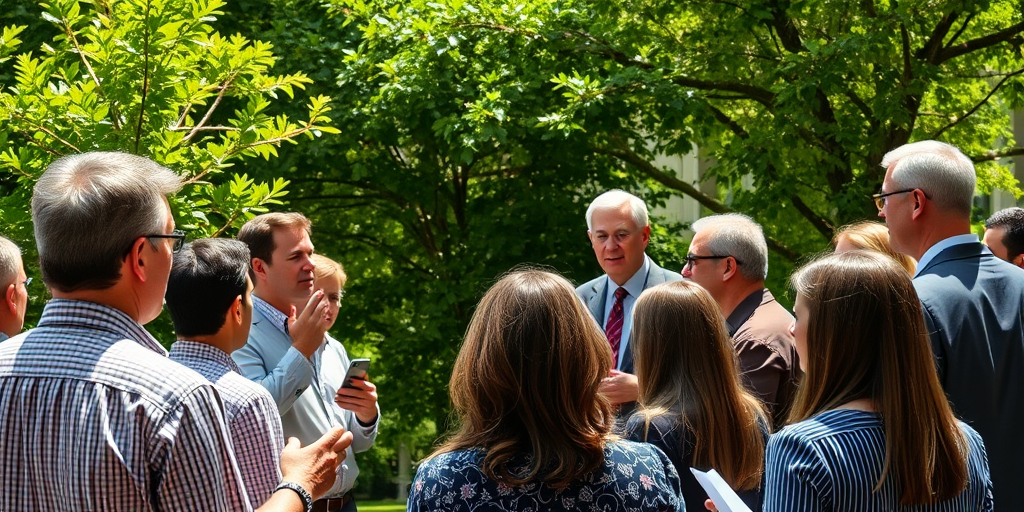Pit Stop or Pitfall? TCU Investment Expert Weighs in on Private Equity in Collegiate Athletics
The world of collegiate athletics is on the cusp of a significant transformation, as private equity looms large on the horizon with the potential to reshape the athletic landscape. In a recent conversation with TCU News, Jason Safran, Chief Investment Officer at Texas Christian University (TCU), delved into the ramifications of private equity investments in this sphere—especially after the landmark House v. NCAA case that allowed revenue sharing with student-athletes. Safran painted a complex picture, suggesting that while private equity could provide a much-needed financial boost to universities, it also poses significant risks if not managed carefully.
Understanding Private Equity: The Pit Crew for Companies
Before diving into specifics, Safran offered clarity on what private equity entails. Unlike investments in publicly traded companies, private equity involves infusing capital into privately held firms. Safran likened this process to a Formula 1 pit crew—refining operations, boosting performance, and ultimately enhancing the business’s market value. Such investments require endurance, often tying up funds for five to ten years before yielding returns.
This explanation framed the backdrop against which a potential $2.4 billion investment in the Big Ten Conference was discussed. This deal could revolutionize the conference’s approach to media and sponsorship management, although it has sparked debates over preserving traditional sports values.
The Allure and Risks: Cash Infusion vs. Cultural Challenges
One of the brightest spots of private equity is the immediate financial relief it can provide. For universities, especially those in competitive conferences like the Big Ten, this influx could be a game-changer—assisting with adapting to evolving economic conditions or enhancing their athletic programs. Streamlining operations and consolidating media rights could also provide a competitive edge in the fast-paced world of collegiate athletics.
However, Safran cautioned that this “turbo boost” requires precise steering to avoid pitfalls. The alignment between the universities’ missions and private equity initiatives is crucial, as is navigating increased media scrutiny. “The trust in higher education is declining,” Safran noted, emphasizing the need for universities to effectively communicate their values and the benefits of these partnerships.
Community Impacts and Historical Context
Locally, in Fort Worth and beyond, the ramifications of such shifts in collegiate athletics could be far-reaching. Texas Christian University, like many others, finds itself at a crossroads. The potential deals come at a time when universities are grappling with financial pressures and seeking sustainable models to support athletics and academics.
For the Fort Worth community, where TCU plays an integral role, these changes bring both excitement and trepidation. James Herrera, a Fort Worth resident and TCU alumnus, expressed mixed feelings, “Modernization sounds great, but not if it means losing the spirit of what college sports are really about.” His sentiments echo a broader concern over maintaining the integrity of college sports traditions while embracing financial innovation.
Looking back, institutions within the region have navigated various economic challenges, from recession impacts to funding shifts, all while striving to preserve their educational missions. Today, the potential involvement of private equity in athletics demands a careful reevaluation of priorities.
Future Outlook and Diverse Perspectives
The proposal involving the Big Ten Conference has already stirred debate among its members. While some see it as a leap forward in adapting to the 21st-century sports landscape, others, like the University of Michigan, voice caution over maintaining sports traditions. This illustrates the broader national dialogue on the role of finance in shaping collegiate athletics.
For Safran, the conversation is ongoing. “From here, institutions should weigh their core objectives and ensure any partnership aligns with those goals,” he advised. His insights highlight the need for careful consideration and strategic planning to ensure the advantages outweigh the drawbacks.
As this story unfolds, it signals a pivotal moment not only for the Big Ten but potentially for collegiate conferences across the country. The potential for fresh capital is enticing, yet the ethical and cultural implications make it a complex narrative for stakeholders at every level.
Engagement and Resources for Residents
For community members eager to learn more or voice their opinions, resources are becoming available. TCU, alongside other universities, plans to engage with stakeholders through forums and discussions. Interested parties are encouraged to reach out via local university contact channels or visit institutional websites for updates on this evolving issue.
In conclusion, as the concept of private equity permeates the realm of collegiate athletics, its impact will resonate well beyond the boardrooms. For Fort Worth and similar communities, the challenge lies in balancing innovation with tradition—ensuring that the ongoing story remains one of progress and integrity, rather than one of pitfalls.







